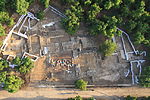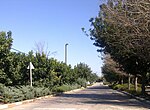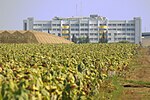Kabri, Israel
1949 establishments in IsraelKibbutz MovementKibbutzimMateh Asher Regional CouncilPopulated places established in 1949 ... and 1 more
Populated places in Northern District (Israel)
Kabri (Hebrew: כַּבְּרִי, also transliterated Cabri) is a kibbutz in northern Israel. Located in the Western Galilee about 4 kilometres (2 mi) east of the Mediterranean seaside town of Nahariya, it falls under the jurisdiction of Mateh Asher Regional Council. In 2021 it had a population of 1,098.The kibbutz is located on lands which used to belong to the depopulated Palestinian villages of Al-Kabri and al-Nahr.
Excerpt from the Wikipedia article Kabri, Israel (License: CC BY-SA 3.0, Authors).Kabri, Israel
Mate Asher Regional Council
Geographical coordinates (GPS) Address Nearby Places Show on map
Geographical coordinates (GPS)
| Latitude | Longitude |
|---|---|
| N 33.020833333333 ° | E 35.148888888889 ° |
Address
2512300 Mate Asher Regional Council
North District, Israel
Open on Google Maps









